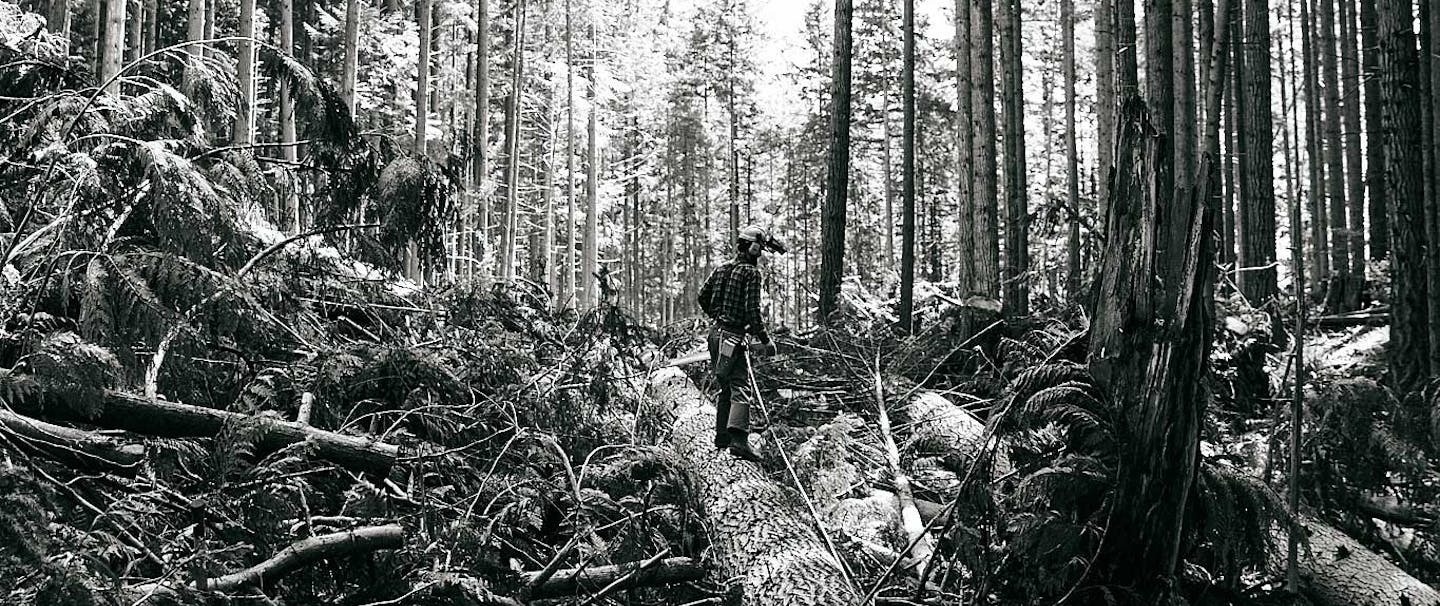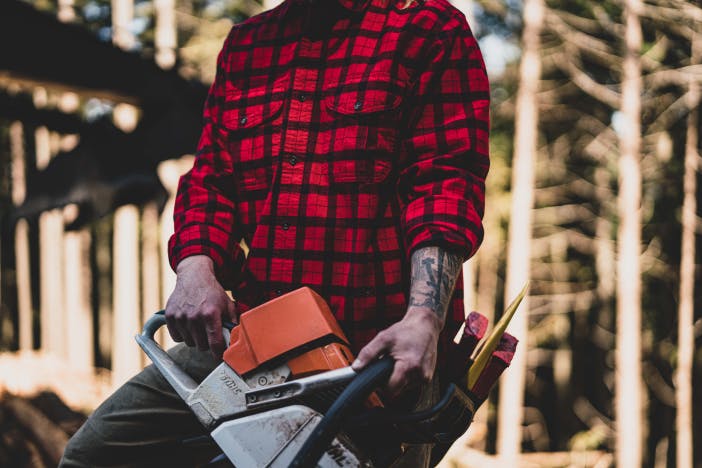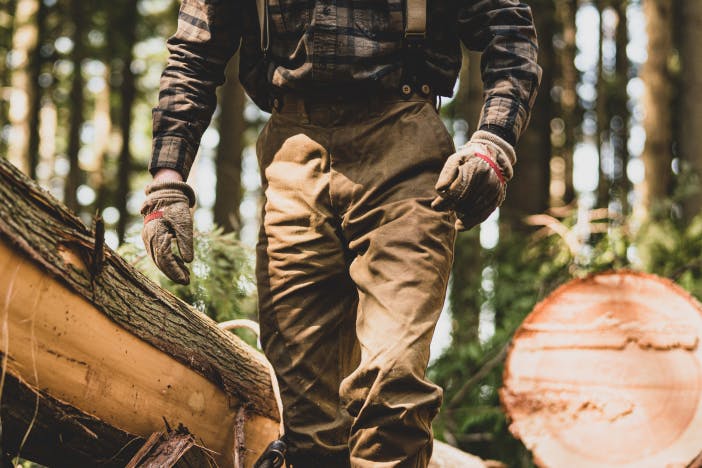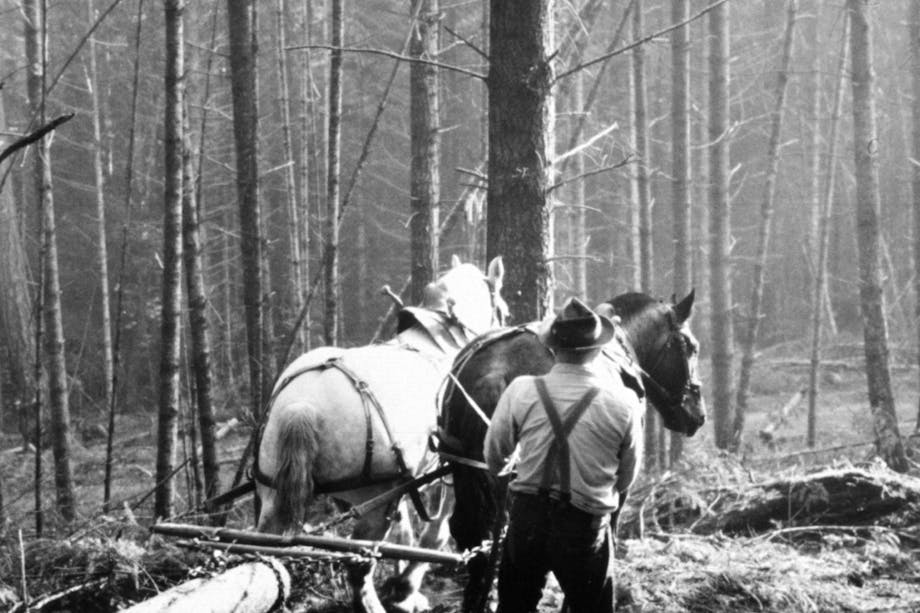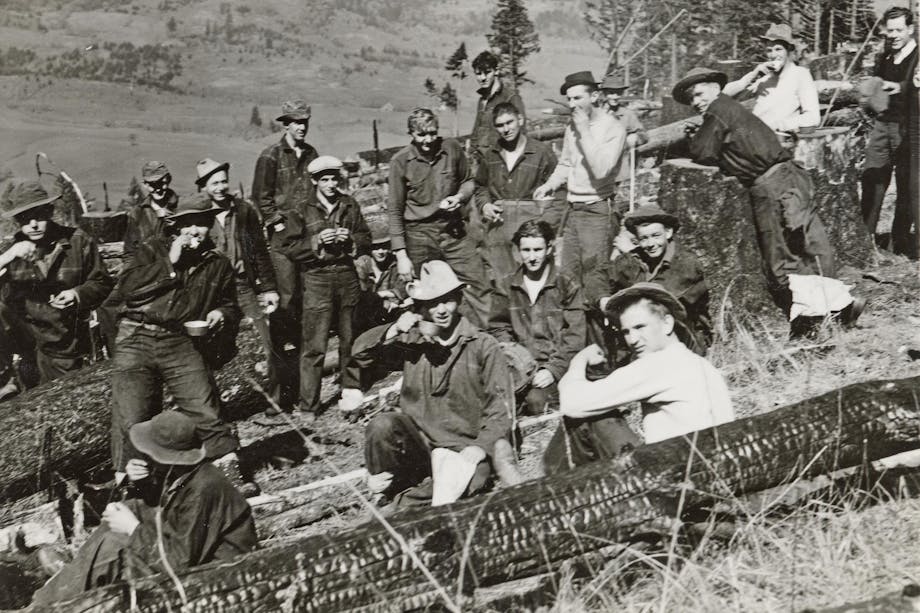OVER THE LAST FIVE DECADES, THE LOGGING INDUSTRY IN THE UNITED STATES HAS EVOLVED CONSIDERABLY, AND THAT IS A GOOD THING. NOWADAYS, WHEN YOU HEAR A CHAINSAW ROAR TO LIFE OR SEE A SEMI-TRUCK RUMBLE BY LOADED DOWN WITH FRESHLY FELLED TREES, YOU’RE WITNESSING THE FINAL STAGES OF AN INCREDIBLY COMPLEX PROCESS. A MYRIAD OF GROUPS HAVE WEIGHED IN, EACH ONE WITH A STRAIGHTFORWARD GOAL IN MIND, ENSURING THAT THE LOGGING INDUSTRY IS SUSTAINABLE AND CAUSES AS LITTLE ENVIRONMENTAL DAMAGE AS POSSIBLE.
It wasn’t always this way. In the last century, many fights were waged as whole swaths of primordial forestland fell to the saw in this country. Clear-cutting and poor logging practices left ugly scars, which energized an environmental movement that often led to unpleasant confrontations and bitter feelings. But beginning with the passage of the Clean Water Act in 1972, changes began to take place. Across the nation, a multilayered approach that incorporates federal, state, and local ordinances came into being to ensure that American forests are healthier than they have been in a long time. Nowhere is this shift more evident than in the Pacific Northwest, where the modern logging industry is thriving and the wounds of the past are receding.
“If we do our job correctly, it can be hard to tell we were there only a few years later.”
“Essentially, what we strive for is to mimic the natural events that happen in the forest all the time,” says Sam Petska, a forester with Nielsen Brothers Incorporated, one of the larger loggers in Washington State. “Trees get blown down and die off naturally; our goal is to recreate that with minimal effect. If we do our job correctly, it can be hard to tell we were there only a few years later.”
Sometimes, it can be hard for people to recognize when things are better. Few people enjoy the sight of a swath of land filled with stumps, the sky shining down on an open area surrounded by dense forestland. But logged land carries complexities that may not be evident at first glance. Every forest is different, with each having its own ecosystem and personality. That’s what the foresters are there for: to ensure that no untold damage happens.


They sit down with biologists, geologists, ecologists, and other stakeholders to ensure that every watershed has been mapped, wildlife corridors examined, trucking roads carefully laid out, and environmental issues addressed. “In the old days, logging would start at one end of the watershed and chop down every tree,” says Corey McDonald, Northwest Forestry Manager with the Washington State Department of Natural Resources. “Nowadays, we start with a small parcel of land, say 200 acres, and start whittling it down, carving it to ensure that everything is protected before the trees come down.”
Old-growth forests are left alone. Private and public lands are farmed on a rotational basis, using second- and third-growth trees. Modern logging techniques mean fewer boots on the ground and a safer work environment while lowering the impact on the land. Utilizing a patchwork approach of logging ensures that local wildlife still have homes, runoff is minimized, and some old trees are left standing to work congruently with the several hundred new saplings planted by the logging companies. Often, large game like elk and deer arrive in the newly opened areas to graze on new grasses that thrive in the cleared areas. There is an overarching plan.
As one of the leading global consumers of lumber, the United States is also home to some of the largest forestlands on the planet. It behooves us to be responsible stewards of the land.
Lumber is a commodity—one that is highly sought after. As one of the leading global consumers of lumber, the United States is also home to some of the largest forestlands on the planet. It behooves us to be responsible stewards of the land. Our sustainable logging practices ensure that we can get our lumber from trustworthy sources and that local logging remains financially viable. It can often be a tricky path to navigate.
“There are still many battles that are going on around logging, but it’s a lot less acrimonious these days, with both sides (timber and environmentalists) trying to work together for good,” says Chase Gunnell, the Communications Director of Conservation Northwest, a nonprofit that encourages collaborative logging projects. As Gunnell says, logging that “improves the health of the forests, supports wildlife, and creates economic activity that supports healthy communities,” can certainly happen.
As the world’s population keeps growing, and the demand for lumber expands, the United States is exporting logging practices worldwide. There is hope. Things can change. Logging might not be pretty to many people, but it can be done correctly—and sustainably—while supplying the world’s need for wood.
